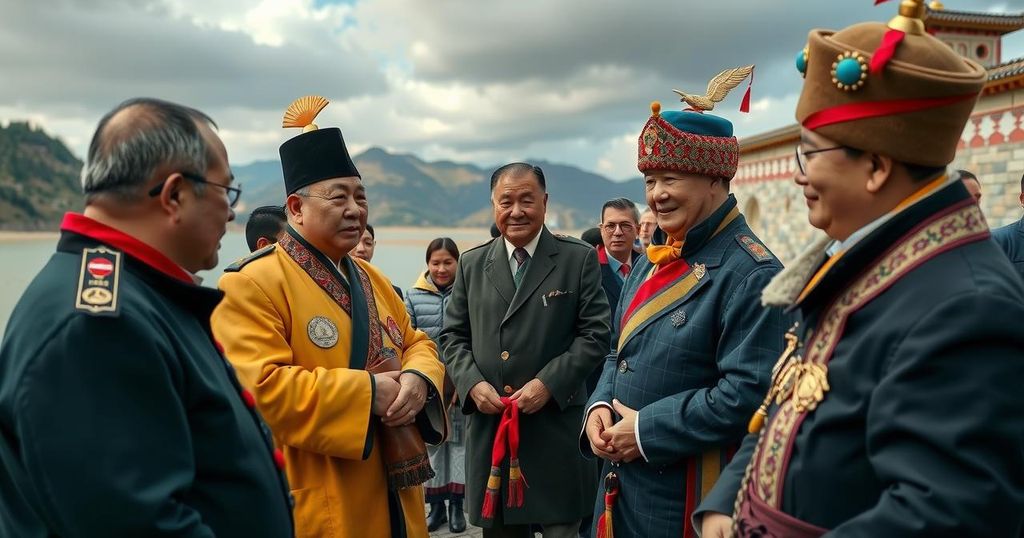Kassym-Jomart Tokayev’s recent visit to Mongolia marks a diplomatic revival, being the first by a Kazakh president in 16 years and aims to strengthen bilateral ties. Key agreements include boosting trade to $500 million, cooperation in satellite technology, and joint efforts in exploring critical mineral resources. The visit underscores Kazakhstan’s intent to engage more actively with Mongolia amidst a backdrop of historical political challenges and economic opportunities.
The recent state visit of Kassym-Jomart Tokayev to Mongolia marks a significant turning point in the diplomatic relations between Kazakhstan and Mongolia, being the first visit by a Kazakh president in 16 years. This visit serves as a strategic initiative to revitalize and enhance ties that had been effectively dormant since the presidency of Nursultan Nazarbayev. Despite having 32 years of diplomatic relations and a sizable Kazakh diaspora in Mongolia, the political unrest in Mongolia has historically placed a strain on these relations. The political climate in Mongolia, characterized by protests and periods of unrest, notably includes a violent incident in 2008, which resulted in a state of emergency and significant casualties. Such instances have contributed to a cautious approach from Kazakhstan towards its Mongolian counterpart. During his visit, President Tokayev emphasized the importance of the Kazakh diaspora in Mongolia, which consists of over 117,000 individuals, serving as a firm foundation for strengthening bilateral relations. Discussions during the visit between Tokayev and Mongolian President Ukhnaagiin Khurelsukh focused on achieving strategic partnership objectives. This diplomatic engagement has already begun to yield positive outcomes, as evidenced by an uptick in trade turnover, which, after previously declining, experienced a significant increase, reaching $150 million by the end of 2023. The leaders have set an ambitious target of achieving $500 million in trade within the foreseeable future. Additionally, tangible agreements were established, including a remote sensing investment agreement aimed at mapping Mongolia through satellite technology, which represents Kazakhstan’s inaugural space program. A memorandum for cooperation in nuclear energy development was also signed, allowing both nations to leverage their respective resources and experiences. Furthermore, Rustem Mustafin, deputy director at the Center for Political Studies, pointed out potential collaborative endeavors in the exploration and development of critical mineral deposits. He noted the growing global demand for critical raw materials, emphasizing Kazakhstan’s substantial reserves of rare earth metals and the opportunity for joint ventures with Mongolia to enhance mining and scientific innovation within both countries.
The background context for this article revolves around Kazakhstan and Mongolia’s diplomatic relationship, which has spanned over three decades. Despite the lengthy ties, relations have stagnated considerably since the presidency of Nursultan Nazarbayev, largely due to Mongolia’s internal political turmoil and the global geopolitical landscape. The Kazakh diaspora in Mongolia remains a crucial element for fostering relations, bolstered by cultural and media connections. The recent state visit by President Tokayev signals a renewed commitment to expanding and diversifying bilateral cooperation, particularly in trade and technological advancements. This visit comes at a time when both nations seek to revitalize their economies post-COVID, aiming for higher levels of trade and investment while exploring collaborative ventures in critical sectors such as mineral resources and energy.
In conclusion, President Kassym-Jomart Tokayev’s visit to Mongolia represents a significant diplomatic renaissance, signaling renewed commitment and strategic partnership between Kazakhstan and Mongolia. This visit aims not only to bolster trade — with an ambitious target of $500 million in the near future — but also to pave the way for cooperation in pioneering sectors such as space technology and nuclear energy. The meetings underscore a shared vision for enhanced collaboration, particularly in the area of critical resources, which could foster economic growth and innovation in both nations.
Original Source: timesca.com






